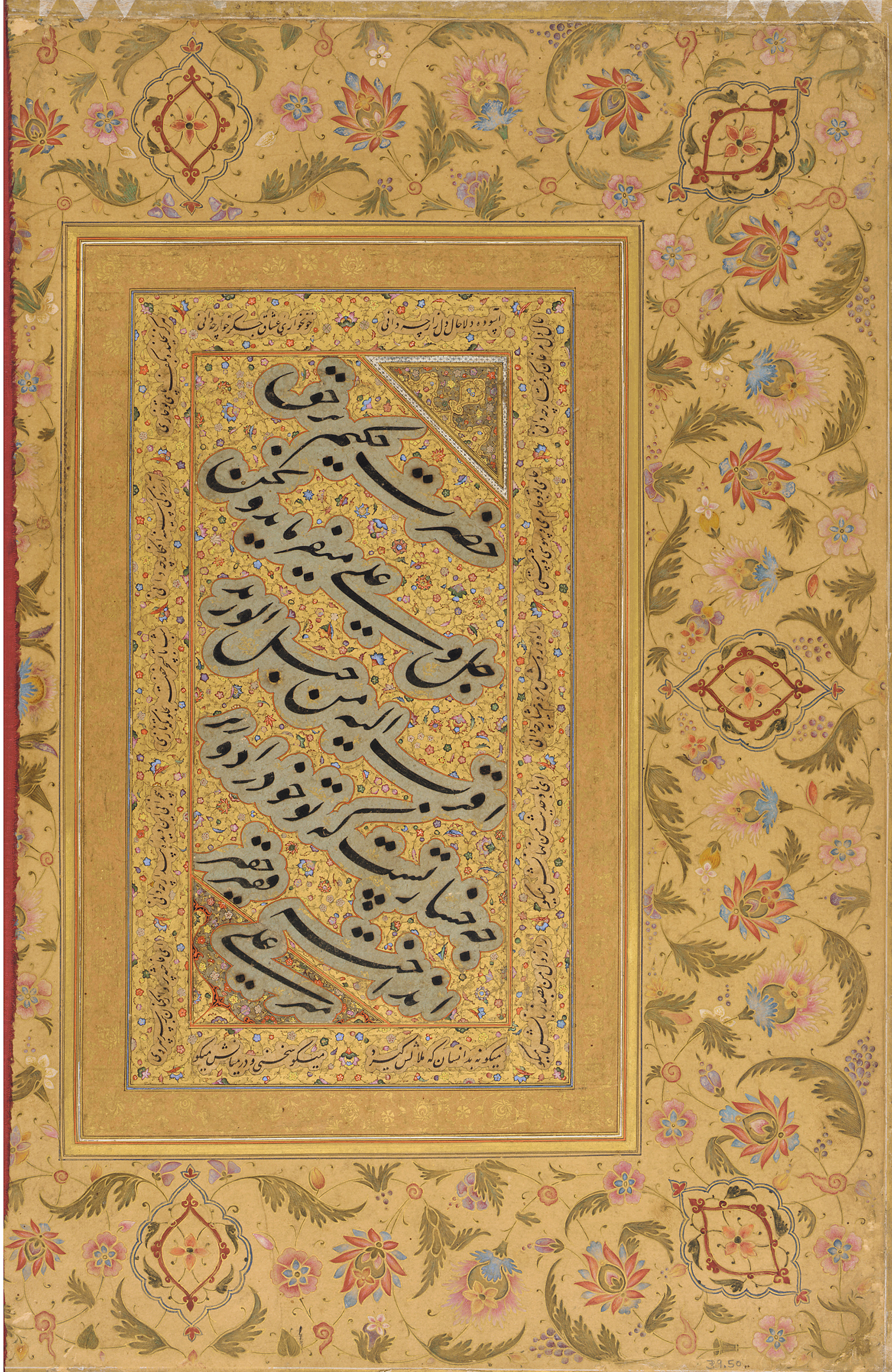Folio from an unidentified album
Large-scale folios in nasta‘liq became popular at the turn of the sixteenth century in Iran and in the Persian-speaking sphere. Calligraphers initially created these individual pages, called qit‘as (meaning both fragments of poetry and calligraphic samples), as exercise sheets, or mashq. Each qit‘a normally consists of a quatrain arranged in four diagonal lines in the central zone. The verses were in fact originally written horizontally in a type of nasta‘liq known as jali, a large form of the script with exaggerated characteristics, such as elongated strokes and dramatic variations in width. The name of the calligrapher usually appears in the lower left triangle, as it does here. In contrast with the monumental central panel, cartouches with unrelated verses, composed in small script (khafi), enliven the borders.
Decades after these lines of Persian poetry were written, connoisseurs in Mughal India collected such highly prized qit‘as and had them mounted on the diagonal—to heighten their dramatic visual effect—with ornate borders. The elaborate folios were then assembled in albums that still remain hallmarks of Mughal artistry.
Folio from an unidentified album
Signed by Mir Ali Haravi (d. ca. 1550)
Uzbekistan, probably Bukhara, Shaybanid period, ca. 1530–40
Borders: India, Mughal period, ca. 1630–60
Ink, opaque watercolor, and gold on paper
Purchase
Freer Gallery of Art F1939.50b


